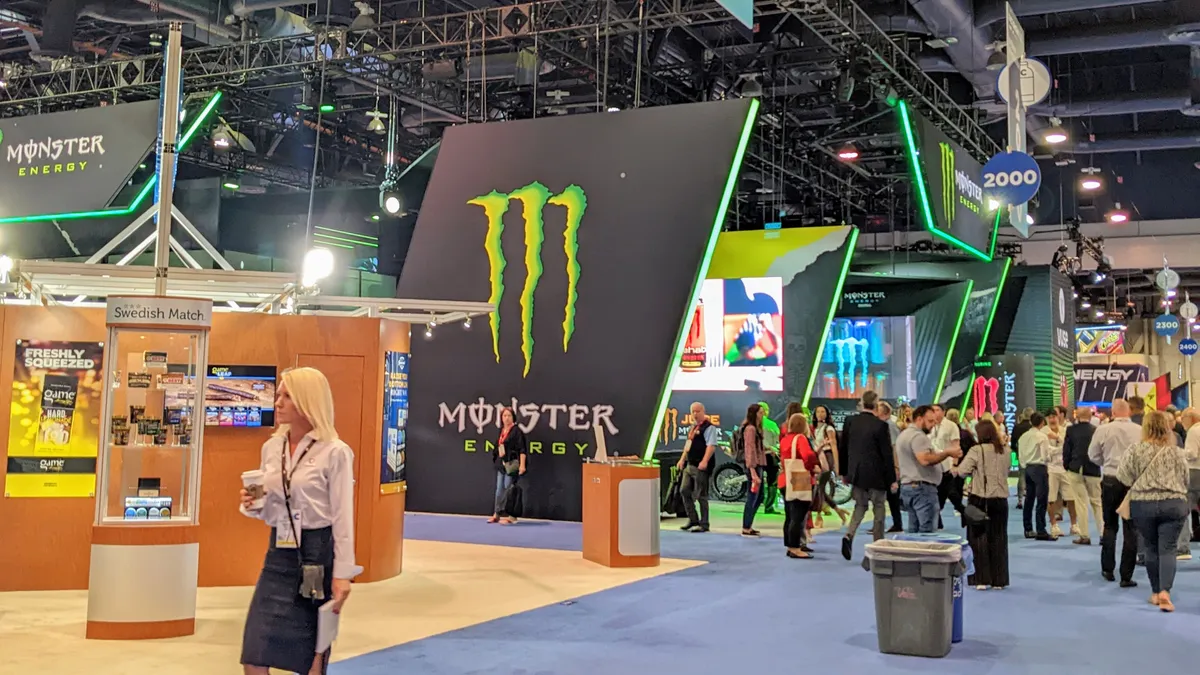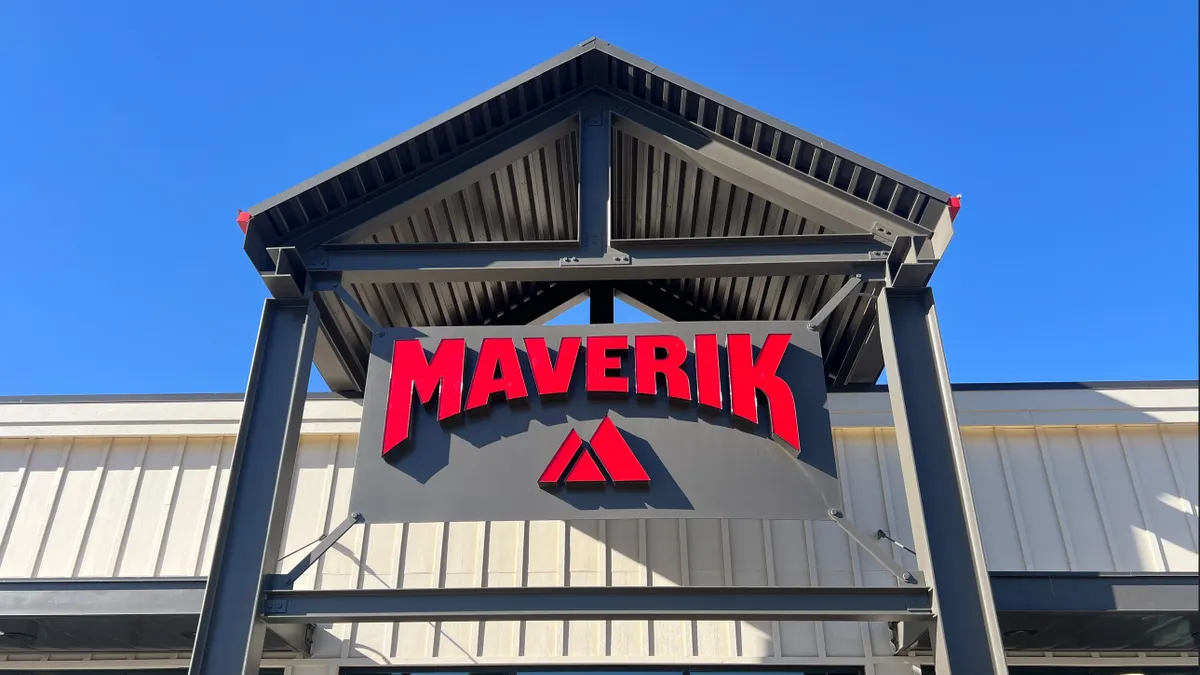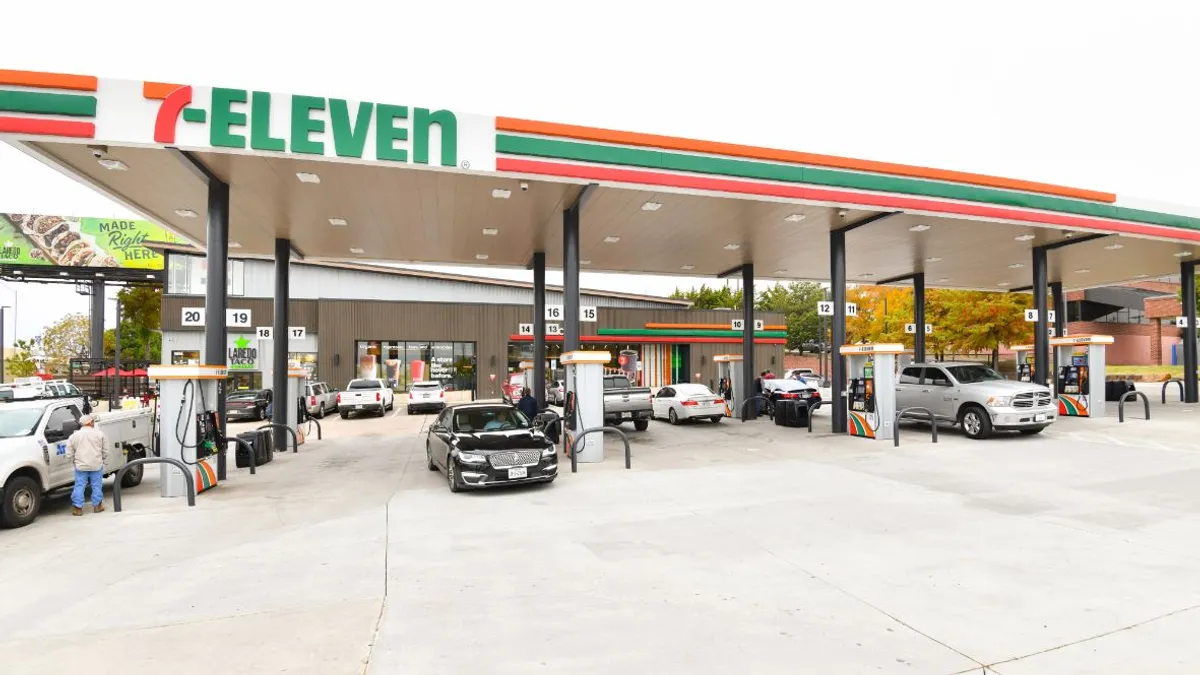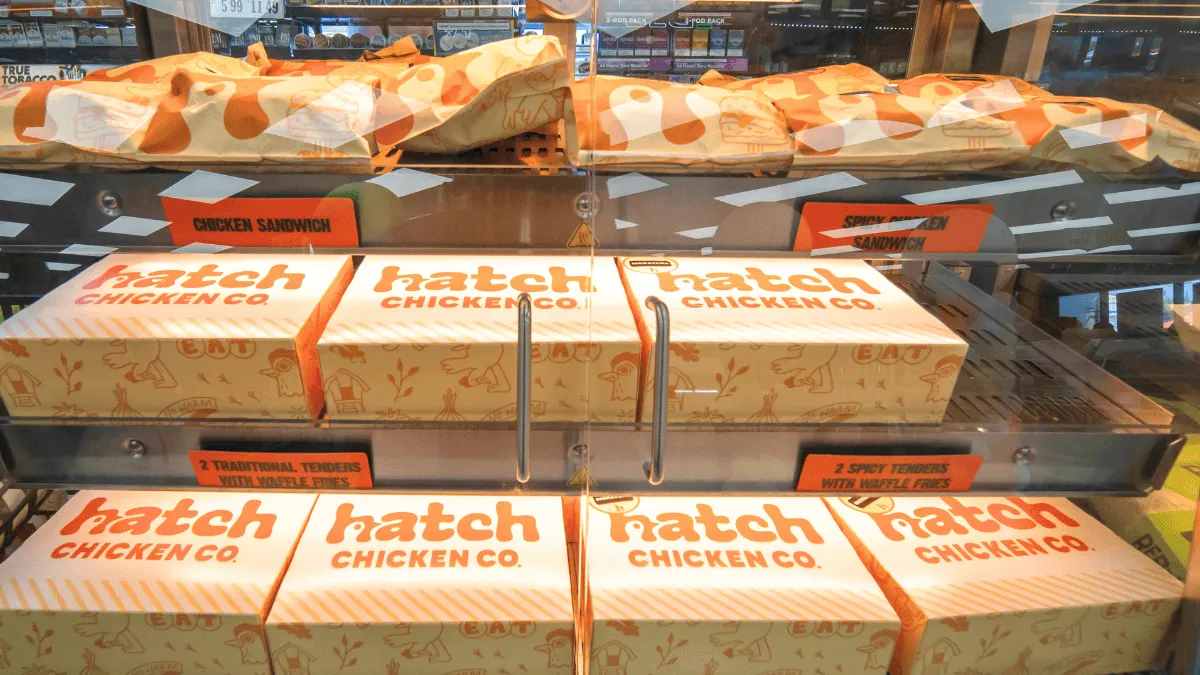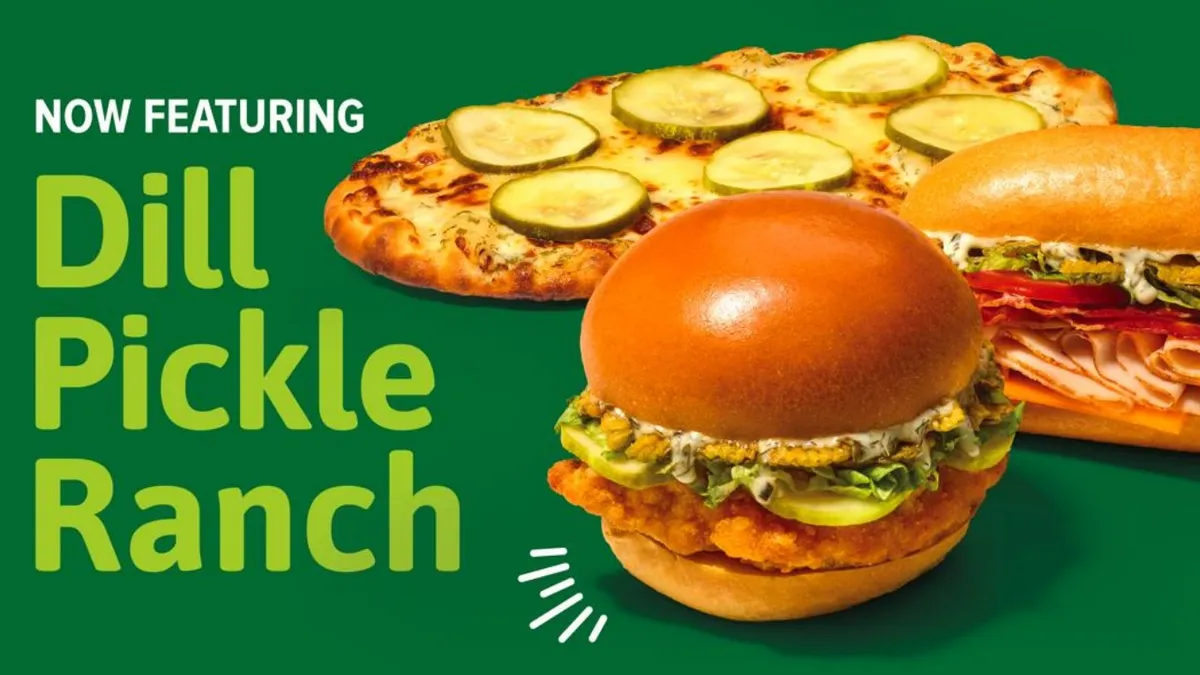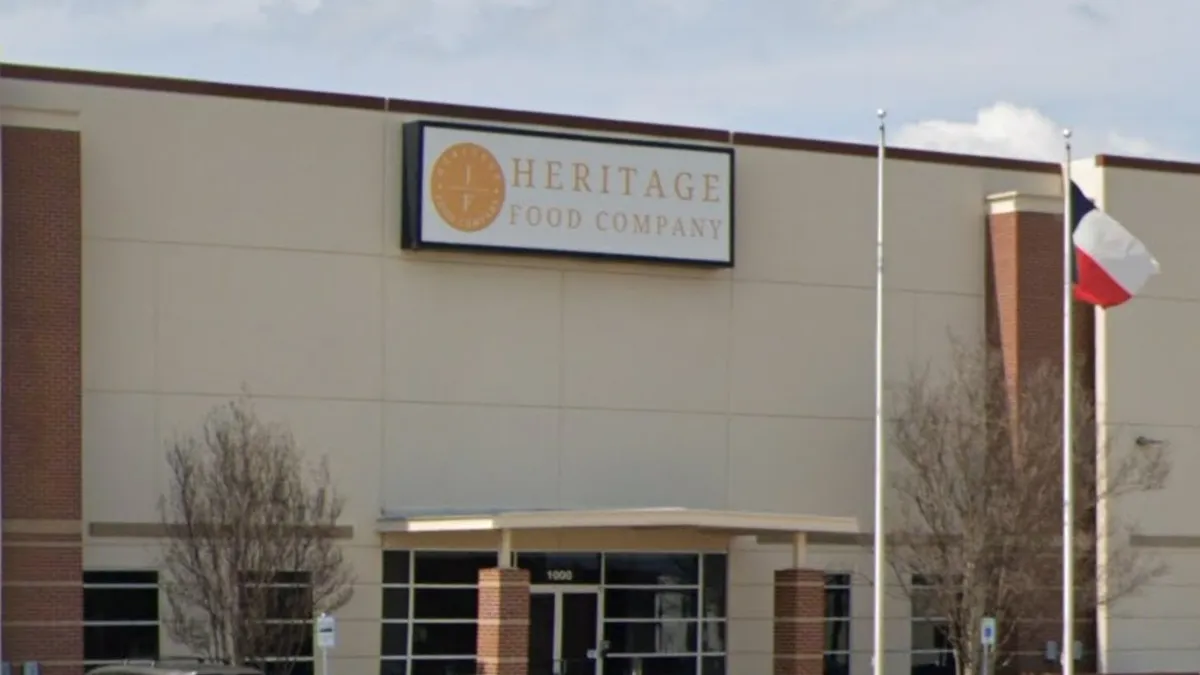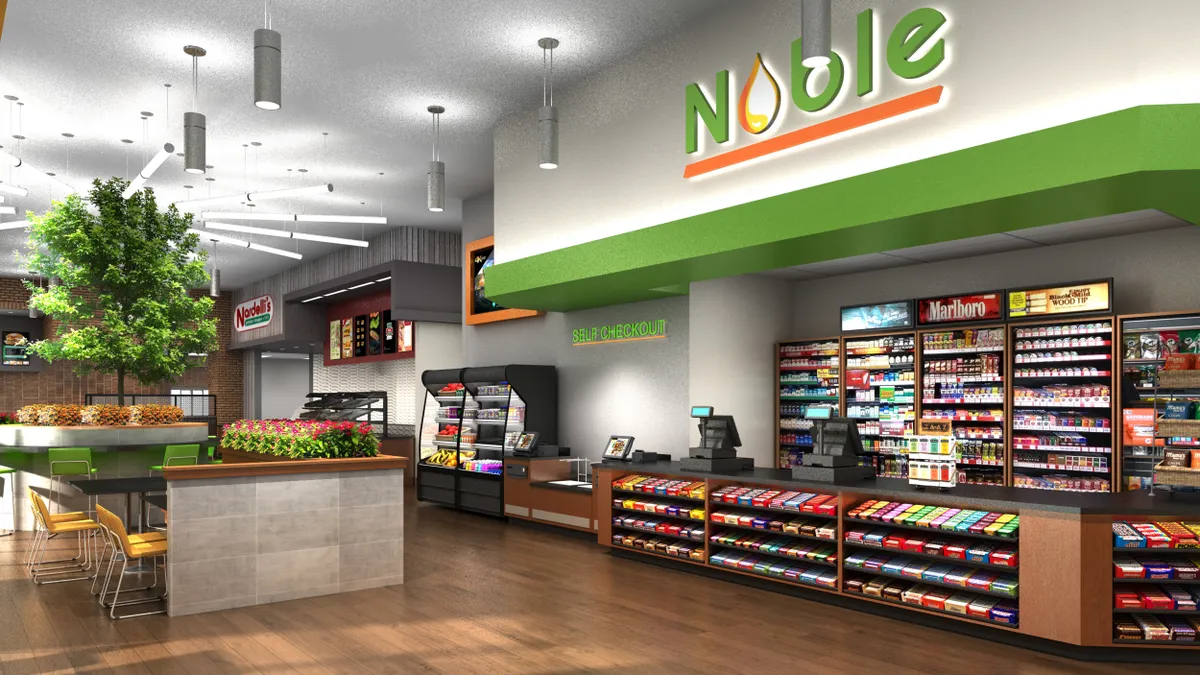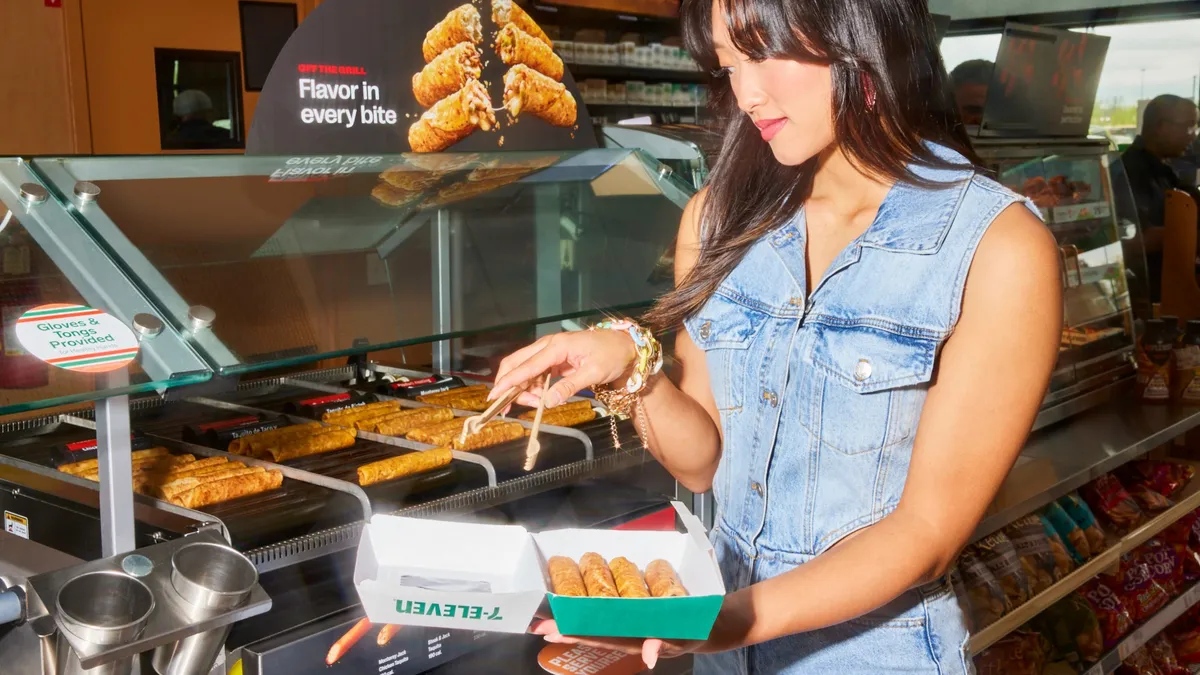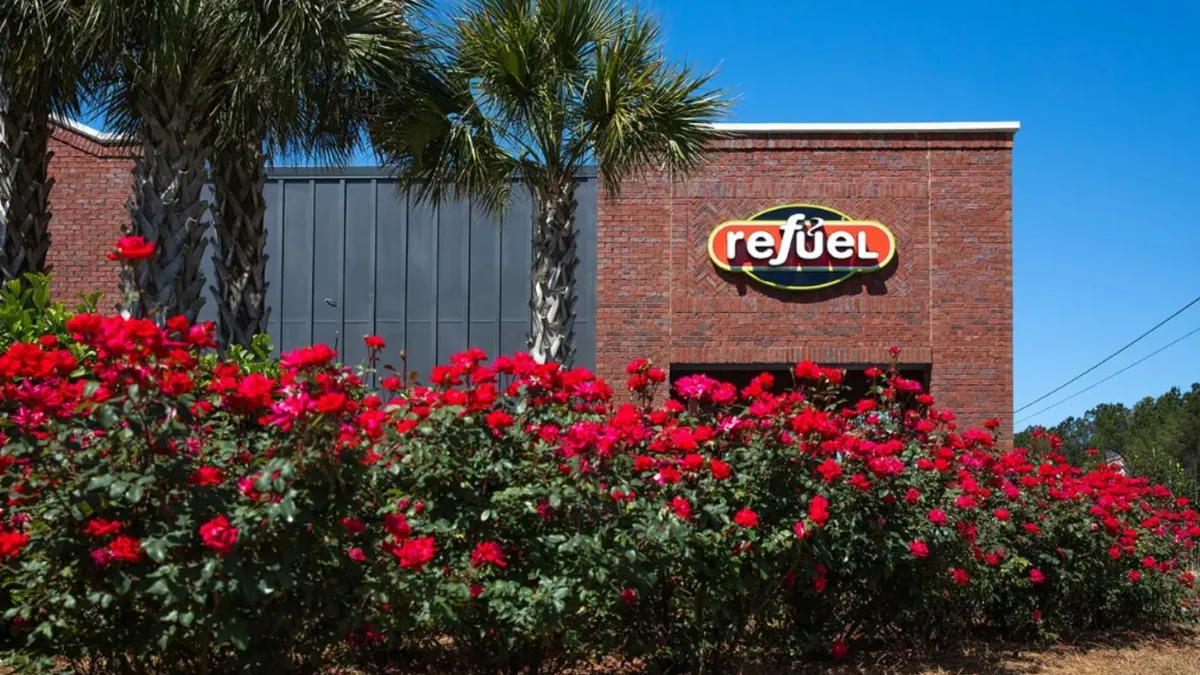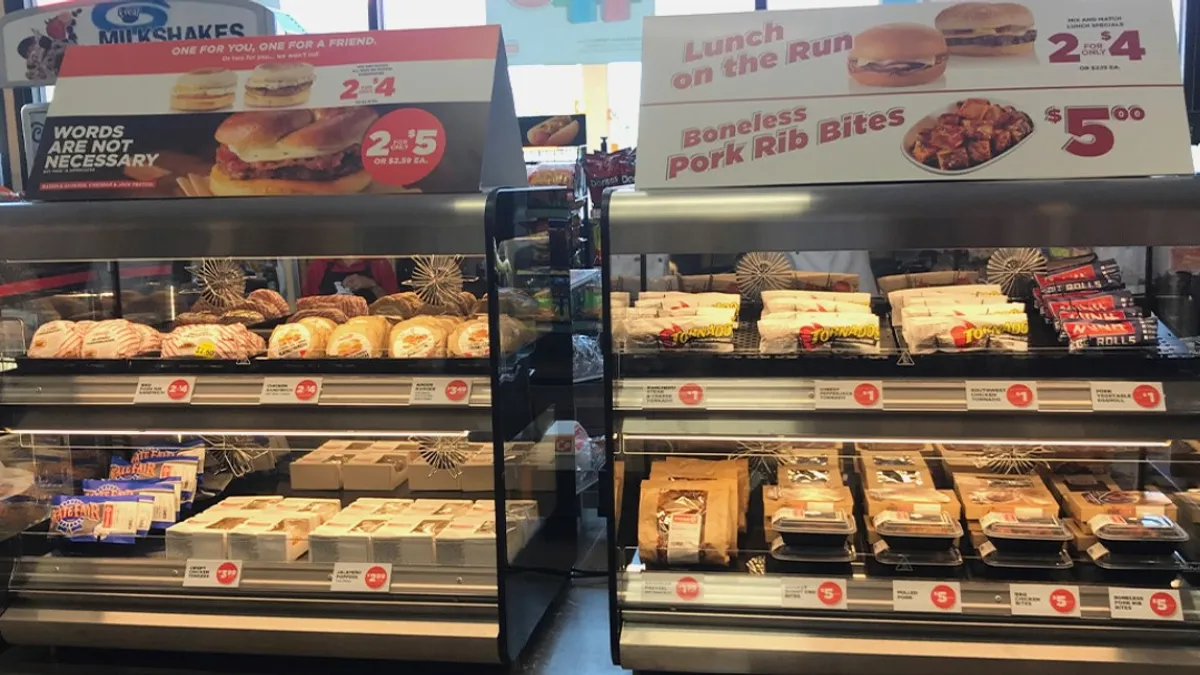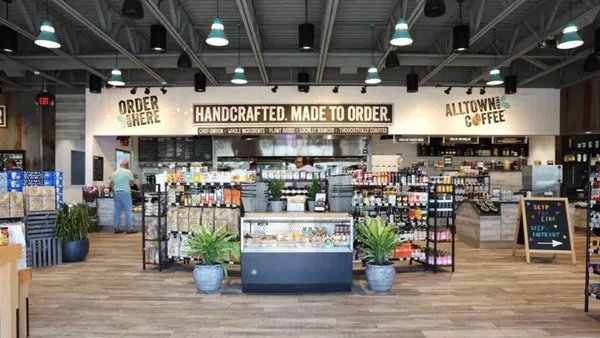LAS VEGAS — The NACS Show expo floor is an explosion of color, sweets and snacks. Fluorescent yellow cans of Ghost Energy Swedish Fish drinks compete with neon green Monster drinks. Don’t want an energy drink? Try out one of dozens of ready-to-drink cocktails, beers or juices offered, from Nutrl to AB InBev.
At least eight companies lined their booths with beef jerky-filled cups, promising tastes of teriyaki or smoked crack pepper. Turn any corner, and candy and cookies were typically within grabbing distance.
The variety of products can be overwhelming.
Now imagine being a consumer faced with crowded store shelves. How are stores and brands helping those people make a decision? Four food and beverage companies spoke with C-Store Dive about their strategies working with retailers to lure shoppers and maximize conversions.
Conagra
“C-stores are the place for flavor seekers,” said Spencer Fivelson, vice president and general manager of snacks for Conagra.
That attraction informs the company’s strategy with convenience retailers. Despite having smaller formats, c-stores typically have bigger assortments of items like seeds than grocery stores, Fivelson said.
“When you think about a grocery store, with any assortment, we start with a core first, but when you've got a smaller assortment, you don't often get to those new and exciting flavors,” he said. “In c-stores we've got more pegs that can accommodate more of these flavors. And that's just contributed to a lot of growth.”
By offering a wider selection of bold flavors for its Bigs sunflower seeds, including Takis Fuego, dill pickle or Caesars ExtraMostBestest Pepperoni Pizza, it can create buzz for both Conagra and the retailer.
Conagra also began offering larger-sized bags of one of its top c-store brands: Andy Capp’s Hot Fries. While the smaller portion is more amenable to impulse buys, the larger one works for convenience stores — often in urban locations — where customers also tend to shop for additional groceries.
“In a smaller format, if you can shelve that, if you've got the space, it turns extremely well. It's a higher dollar rate,” he said.

Ferrara
The maker of Nerds and SweeTarts has invested significant time working with c-store retailers studying their consumers to increase impulse buys. How does the c-store shopper actually shop the aisle?
“With some of the work that we've done understanding shelving principles, understanding how the consumer is shopping now, we've been able to drive a point of view that's driven 7% improvement in conversion in the c-store, specifically within candy,” said Adam Roscher, chief customer officer at Ferrara.
Jade Reddington, vice president of c-stores, said Ferrara has worked with retailers to change the way they merchandise its products to adapt to changing preferences.
They recently partnered with Maverik, helping the c-store achieve double-digit growth in the category. “They completely changed their entire planogram. So if you think about peg sets … we remapped the whole thing and it drove their business of their entire category, not just our brands,” said Reddington.
While Roscher says its primary focus has been on refreshing its traditional shelves, Ferrara will look next at queuing lines.
“If you think about when you walk in the store, typically in the past, you've gone right to the register. Now you need to kind of wind through a little bit more in a way that consumers hadn't been before,” he said. “Now we're making sure that we've got the right impulse items, the right mix of brands. The one thing we always tout is within the confections category, the average consumer eats 17 brands a year. So assortment and choice really drives the category and something that we continue to really focus on.”
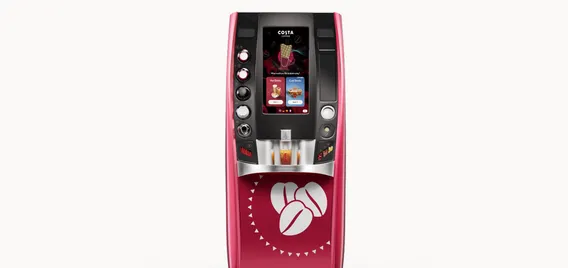
The Coca-Cola Company
The beverage giant’s c-store strategy is multi-pronged, starting at the pump. With its extensive experience working with restaurants, Coca-Cola helps retailers think through food pairings and then push targeted promotions while customers are refueling to help bring people inside the store.
On the coffee front, it has several machines, from a countertop platform to its Costa Smart Cafe, which it dubs a “barista in a box.” Joe Gaines, director of Costa Coffee U.S. sales, said this machine could be useful to an individual operator with limited capital because it’s a revenue share program.
“We're going to install the equipment and send them all the ingredients except for milk. They maintain it. It's really no upfront capital costs,” he said. The machine uses fresh beans, milk and ice and can dispense over 100 hot and cold drinks without a human needed — a benefit for a business struggling to find labor.
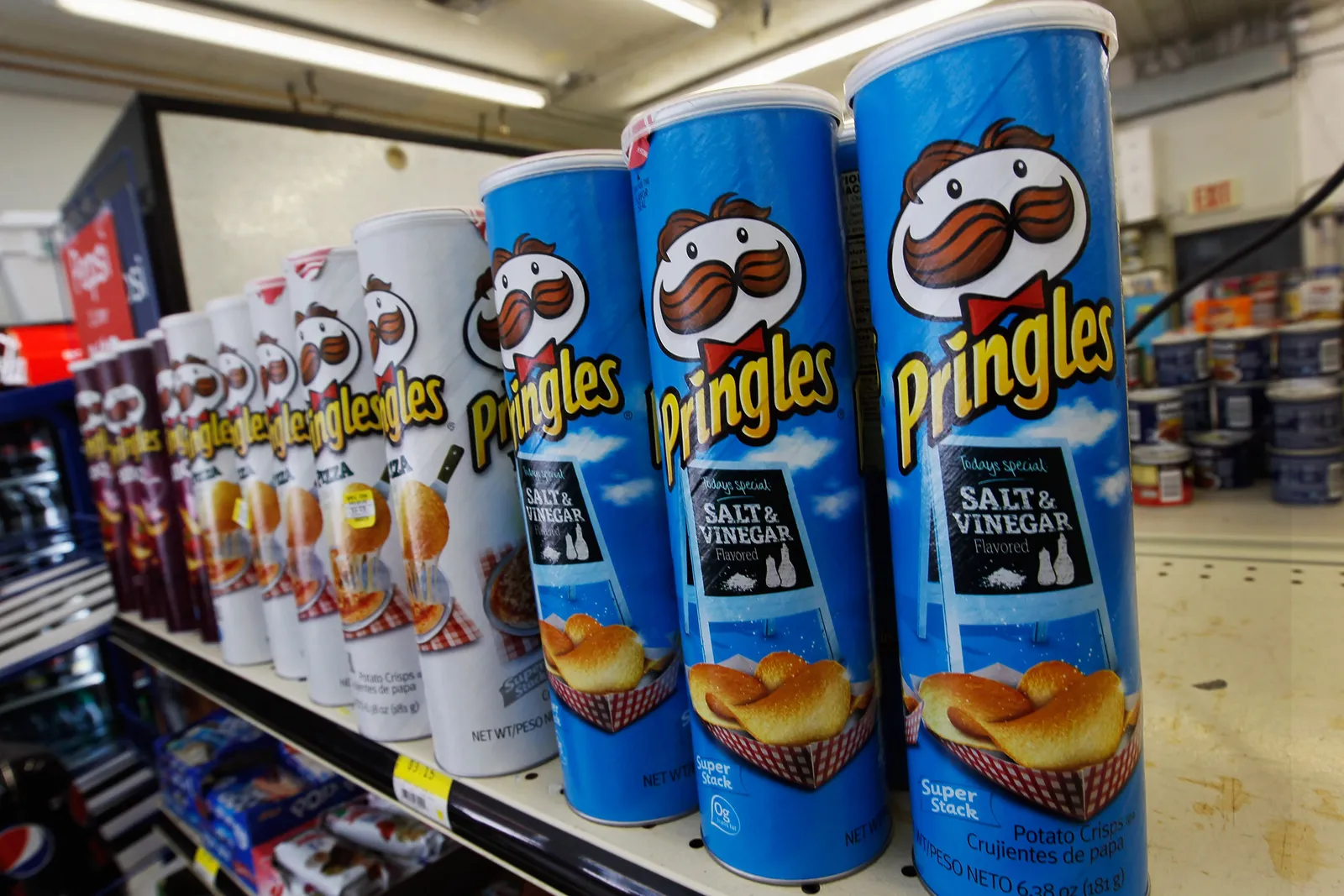
Kellogg
For Kellogg, which counts major chains like 7-Eleven and Circle K as partners, foodservice is one of the primary opportunities in c-stores for selling packaged food as well as hot meals.
One strategy it uses is getting its products, like Pringles or Cheez-Its, near the foodservice stations or fountain beverage dispensers.
“We’'ll focus on our top two to three brands. … We've seen anywhere from a 20% bump, and in some cases, up to a 40% bump on those core items,” said Daniel DeMeyer, senior director of commercial strategy, small format, for Kellogg.
They’ve also had “a lot of success” with bundling options, where a consumer can buy a Pringles tin and a fountain beverage and save money, he said. They’ve also tried similar deals, such as a Pop-Tart and coffee pairing.
In foodservice, Kellogg is currently giving demonstrations to several retailers on how it can help them differentiate their offerings, highlighting its plant-based line MorningStar Farms. The company is focused on creating items that don’t require a lot of preparation and can be eaten on-the-go. One example is using its Eggo waffle like a sandwich carrier and putting either Incogmeato chicken or a spicy black bean burger on it.



